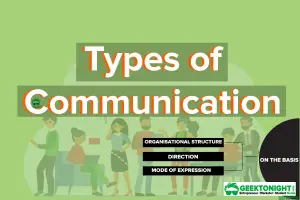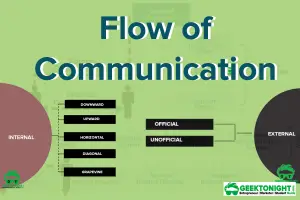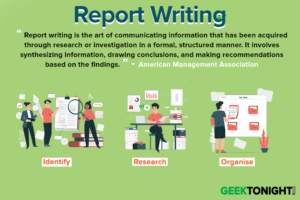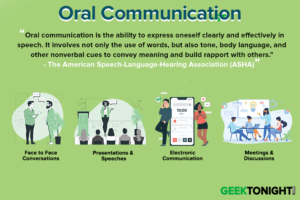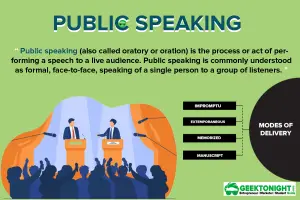What is Listening in Communication?
Listening in communication refers to the active process of receiving, understanding, and interpreting verbal and nonverbal messages being communicated by another person. Effective listening requires paying attention, showing interest, and demonstrating understanding of what the other person is saying. It involves not only hearing the words being spoken but also interpreting the tone, emotions, and body language used by the speaker to convey their message.
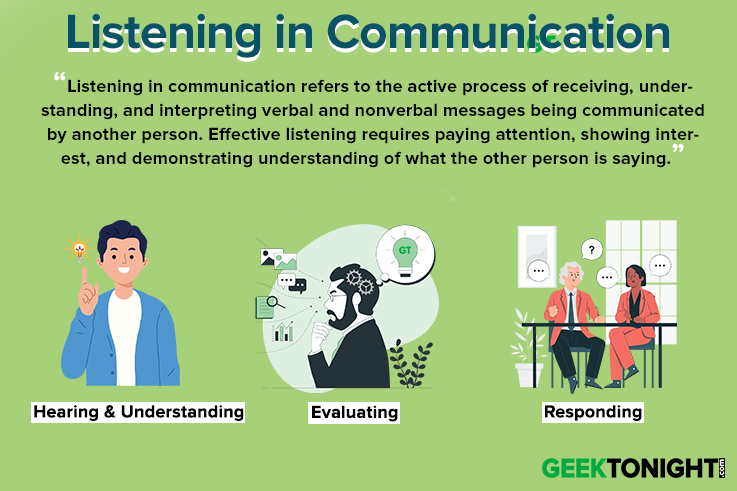
Table of Content
A part of the reason why we do not listen to people at a high level of effectiveness is that we take listening for granted. Most people assume that they already understand what listening is all about, and therefore, there is no need to learn anything more.
We also assume it is easy to be a good listener. In fact, many of us probably assume that we already have effective listening skills. Both of these assumptions are unwarranted. We cannot assume that our listening skills are already at a maximum, we certainly cannot assume that effective listening is simple or easy.
If research studies are anything to go by, the average listening efficiency rate in the business world is only 25 per cent. Immediately after a ten-minute presentation, a normal listener can recall only 50 per cent of the information conveyed.
After 24 hours the recall level is only 25 per cent. Does this bode well for organizations? No. Why? Let us see why listening is so very important in a modern organization.
Importance of Listening
people spend doing just that – listening. Listening is the most frequent, perhaps the most important type of on-the-job communication. Studies indicate that adults spend about 29.5 per cent of their waking hours listening.
Recent studies that focus on the workplace show that, on average, personnel at all levels spend about 32.7 per cent of their time listening while speaking takes up 25.8 per cent of their time and writing 22.6 per cent. Top executives spend even more time listening than other employees.
Listening on the job is not only frequent, it is very important as well. In fact, most managers agree that ‘active listening’ is the most crucial skill for becoming a successful manager. Stephen Covey identifies listening as one of the ‘seven habits of highly effective people’.
Listening can improve work quality and boost productivity. Poor listening skills lead to innumerable mistakes because of which letters have to be re-typed, meetings rescheduled, shipments re-routed. All this affects productivity and profits. Apart from the obvious benefits, good listening helps employees to update and revise their collection of facts, skills and attitudes. Good listening also helps them to improve their speaking abilities.
Despite all these benefits, good listening skills are quite rare in the business world today. As pointed out earlier, a number of studies have revealed that people listen poorly despite the advantages of doing just the opposite.
However, there is hope. Listening is a skill that is a result of learning – it is not “inborn.” We learn to attend to, analyse, and comprehend messages directed towards us, just as we learn other skills. What this means is that anyone can become an effective listener. Further, if the foundations of listening skills are understood, anyone can improve their ability to sort out more fully the meanings of what people are saying to them.
Listening versus the Sense of Hearing
When we hear, we only perceive sounds, but when we listen, this hearing is accompanied by a deliberate and purposeful act of the mind. To listen means to get meaning from what is heard. One may hear the words uttered by another person without really understanding them.
Listening as Behaviour
Listening can be viewed as a form of behaviour that is a part of the communication process – an active effort of attention and perception on the part of the person towards whom the message has been directed. In other words, it is part of the transaction that takes place between people as they communicate.
More formally, listening is an active form of behaviour in which individuals attempt to maximize their attention to, and comprehension of, what is being communicated to them through use of words, actions, and things by one or more people in their immediate environment.
Most people think of listening mainly in terms of using the ears, attending closely to verbal messages. Listening also refers to monitoring the non-verbal and contextual aspects of messages. Thus, in the simultaneous transactions view of communication, listening includes attending to and interpreting all of the ways in which people use words, actions, and things intended to arouse meanings in their receivers. Thus, it is more than just hearing spoken words.
Note also that included in the definition is the concept of “immediate environment.” This refers to the meanings that are included in the source’s message due to the context in which the transmission takes place. Effective listening requires attention to those aspects of a message as well, because they can be both complex and diverse as influences on interpretation.
Example: What we interpret can be very different as we listen to people in familiar and unfamiliar places, to people we know very well versus people we have just met, in-group situations versus one- on-one. Another kind of context is provided by different media that may be part of the communication process – telephone, radio, TV and so on. Each of this set of conditions constitutes a different context, a different environment, that has its own influence on the listening experience.
What something means to us is based on the accumulation of both direct and indirect experiences we have had during our lifetime. This provides for a set of personal internal meaning responses for each of the huge number of symbols, gestures, rules, and so on that make up our language and non-verbal signs.
Only when the sender’s and receiver’s bases of experience are sufficiently similar can meanings of the parties involved be parallel, permitting individuals to share the same interpretations. Comprehension, therefore, depends immediately and directly on the existence of parallel meaning experiences, which can accurately be produced only by effective listening.
The preceding discussion implies that effective listening is no accident – that is not an “automatic’ form of behaviour. While it is true that some aspects of listening are habitual or reflexive, others are certainly not. Therefore, we cannot simply stand around talking to people and expect that high quality listening is just going to “happen.” To provide the accurate communication, both parties in the transaction need to be actively and consciously involved in attending to and comprehending what is being transmitted by the other by all of the means we have discussed.
To be done well, listening is something that we must deliberately and consciously manage. In other words, successfully attending to and comprehending what is communicated to us will be achieved only if it is deliberately set as a key objective – an objective we can achieve if we work hard and systematically. Furthermore, it is not a part-time pursuit. We must set this objective whenever we communicate with other people.
At the same time, it is possible to listen too intently. It would be impulsive, unreasonable, and even impossible to give our total attention to what is being communicated to us at all times, in all situations, and via all media. That would be a tidal wave of information with which no normal person could cope.
Furthermore much of it would be either a ghastly bore or a total waste of time. We can all think of any number of circumstances where we wouldn’t want to involve ourselves intensely in the task of attending to and comprehending whatever information was sent our way.
Stated more simply, an important prerequisite to effective listening is the acquisition of skills in discriminating between what we should pay attention to and what we can safely ignore. The importance of being able to listen selectively but well is closely linked to the essential objectives or goals of the process.
How to be a Good Listener?
- Be Motivated to Listen
- Be Prepared to Listen
- Be Objective
- Be Alert to All Cues
- Make Good Use of the Thinking-Speaking Time Difference
- Use Feedback
- Practice Listening
- Use Verbal and Non-verbal Cues to Encourage the Speaker
Be Motivated to Listen
When you resolve that you will listen, an improvement in your listening skills will become immediately noticeable. Researchers have concluded that the more motivated a listener is, the more active and alert he becomes as a receiver. Though motivation alone cannot solve all problems in listening, it is the first prerequisite to becoming a good listener.
Be Prepared to Listen
Sometimes you need to make some preparation beforehand in order to listen effectively to a particular piece of communication. It is helpful to gather as much relevant information as you can about the subject, the speaker, and the situation.
This will help you to better understand and appraise what the speaker is saying. Preparations could also include attempts to minimize physical barriers between yourself and the speaker and to eliminate all distractions in the environment.
Be Objective
From your own experiences, you would have noticed that you are more receptive to a message when you approach it with an open mind. To be objective, one must avoid jumping to conclusions. Keep your critical faculties on the alert but do not make a judgment until all points are fully developed.
If you make a judgment too fast, there is always the danger that you may fail to register things the speaker says that may not exactly tie in with your judgment. Objective listening entails a conscious effort to keep our emotions and prejudices at bay.
Be Alert to All Cues
Look for the speaker’s main ideas. The speaker’s voice quality, inflection, emphasis and body movement can all offer vital clues to what the speaker feels is most important. Besides, these cues also give you insights into the emotional content of the speaker’s message, which must be taken into consideration if the message is to be fully understood.
Make Good Use of the Thinking-Speaking Time Difference
As mentioned earlier, we normally think much faster than we speak. If you are a listener you can use this gap to your advantage by mentally summarizing and reviewing what the speaker has said. Focus on what the speaker is saying, rather than on what would be appropriate response to the message.
Use Feedback
Using feedback is one way we can get more from our communication encounters. Sometimes this feedback may be as simple as telling the speaker that you don’t understand. This lets you hear the message again. While using feedback, make sure the speaker receives the message, that there’s no ambiguity about your feedback and that your feedback is related to what is going on.
Practice Listening
Proficiency in listening, like in any other skill, is the result of conscious effort. Many of the barriers to effective listening can be successfully overcome through practice. Force yourself to listen to speeches and lectures that seem to hold no obvious interest value. Doing this will help you overcome the temptation to “switch off” when the messages seem dull or difficult.
Use Verbal and Non-verbal Cues to Encourage the Speaker
The listener can use a number of verbal and nonverbal cues to aid the speaker in communicating. Establishing eye contact with the speaker can go a long way in reassuring him or her. Looking out of window while somebody is speaking does little for the morale of the speaker.
Sometimes nodding the head slightly or casual remarks like ‘I see’ can tell the speaker that you’re actively involved in the communication process. Even an act as simple as smiling can offer warmth and support to the speaker and help him to get over his nervousness.
What Speakers can do to Ensure Better Listening?
So far, we have studied ‘listening’ entirely from the listener’s perspective. But the speaker too, to a certain extent, influences the way in which others listen to the message. Of course, this is not to suggest the entire onus of communicating a message is on the speaker – a notion that is alarmingly popular among most poor listeners. But the speaker can use certain techniques to encourage more effective learning.
Try to Empathise
Speak to your listeners. To do this you must understand them – understand how they will respond to your ideas. The best way to do this is to imagine yourself in their position. This will help you to weed out uninteresting and difficult parts that may be irrelevant or could be made more easily understandable by being put in a different way.
Adjust Your Delivery
Make sure the listeners have no difficulty hearing you. You can retain listeners’ interest by modulating your voice and making your speech as lively as you can without sounding ridiculous. A dull monotone often induces mental lethargy and turns listeners off.
Utilize Feedback
As the listener can use feedback to improve the communication, so can the speaker. Be sensitive to listener responses.
Ask yourself
Are they paying attention? Do they look interested? Do they look confused? Are they bored? Answering these questions will help you to make the necessary adjustments and tailor your message to the needs of the audience.
Be Clear
Know your purpose. What is the main point that you are trying to make? If you are not clear about what you want to say and why you want to say it, you’re likely to ramble aimlessly and it’s very difficult to pay attention to disconnected and disjointed wanderings.
Be Interesting
To be interesting you must first of all be interested in what you have to say. Lack of interest on the speaker’s part communicates itself immediately to the listeners and dulls their own response. Lively, stimulating and relevant speech always has a better chance of capturing the audience’s attention.
Stages of Listening Skills
The stages of listening skills are as follows:
Hearing
It can be inferred as a physiological process of absorb- ing sound waves as they travel to the eardrum. At this stage, the brain analyses stimuli and allows only a few to come into focus, which is a key requirement for effective listening. In order to listen effectively, one must accumulate information through listening. The clearer the sound, the easier it is to interpret what is being said.
Understanding
At this stage, the listener identifies the context and meanings of words that are being said. The receiver can make use of the visual and auditory information to understand and try to decipher the meaning of the message. The receiver can also ask a question to better understand the meaning.
Evaluating
At this stage, the receiver gauges information both qualitatively and quantitatively. Evaluating enables the receiver to decide whether it is necessary to respond to the message or not. The receiver evaluates whether or not the message received from the sender is well-constructed or in disarray, unbiased or prejudiced, true or false, significant or farcical.
Responding
This stage requires the receiver to culminate the listening process through verbal or non-verbal response, this way the listener will get to know that message is delivered and understood. Non-verbal form of response can be nodding, making eye contact, smiling, rolling their eyes, grimacing, or any other body language. The verbal form of response can be raising a question, soliciting additional information, redirecting or changing the focus of a conversation, etc.
Active Listening
As the name itself suggests, active listening refers to listening actively and attentively. To actively listen, the listener has to totally concentrate, understand and respond on what is being said instead of just passive hearing. Active listening is an essential business communication skill and it involves responding to exhibit alertness.
Active listening entails listening with all senses. It also involves providing full attention to the speaker. It is pivotal that the receiver (listener) is seen to be attentively listening. If the sender (speaker) finds out that the listener is not paying attention, the speaker may sense that the talk is uninteresting or does not serve the purpose.
Some of the signs of active listening are as follows:
Smile
Smile can be used to exhibit that the listener is paying attention to what is being talked about or as a sign to concur with the speaker. Smile along with the nod of head can be useful to reinforce that messages are being understood.
Eye contact
Active listeners tend to encourage the speaker by maintaining eye contact. Having eye contact combined with smile is a non-verbal sign to bolster the speaker.
Posture
The kind of posture maintained signifies an important characteristic of active listening. Active listeners will lean forward to certain degree and manifest keen interest in communication.
Remembering
Retaining a few important points stated by a speaker or even remembering the name of the speaker can highlight that the messages conveyed have been received and understood or listening was actively done.
Questioning
The listener can showcase that he/she is listening actively by raising the relevant questions or seeking clarification on what is being said. The speaker can also question the speaker in between to check whether the listener is actively listening or not.
Business Communication Notes
(Click on Topic to Read)
- What is Business Communication?
- What is Communication?
- Types of Communication
- 7 C of Communication
- Barriers To Business Communication
- Oral Communication
- Types Of Non Verbal Communication
- What is Written Communication?
- What are Soft Skills?
- Interpersonal vs Intrapersonal communication
- Barriers to Communication
- Importance of Communication Skills
- Listening in Communication
- Causes of Miscommunication
- What is Johari Window?
- What is Presentation?
- Communication Styles
- Channels of Communication
- Hofstede’s Dimensions of Cultural Differences and Benett’s Stages of Intercultural Sensitivity
- Organisational Communication
- Horizontal Communication
- Grapevine Communication
- Downward Communication
- Verbal Communication Skills
- Upward Communication
- Flow of Communication
- What is Emotional Intelligence?
- What is Public Speaking?
- Upward vs Downward Communication
- Internal vs External Communication
- What is Group Discussion?
- What is Interview?
- What is Negotiation?
- What is Digital Communication?
- What is Letter Writing?
- Resume and Covering Letter
- What is Report Writing?
- What is Business Meeting?
- What is Public Relations?
Business Communication Notes
(Click on Topic to Read)
- What is Business Communication?
- What is Communication?
- Types of Communication
- 7 C of Communication
- Barriers To Business Communication
- Oral Communication
- Types Of Non Verbal Communication
- What is Written Communication?
- What are Soft Skills?
- Interpersonal vs Intrapersonal communication
- Barriers to Communication
- Importance of Communication Skills
- Listening in Communication
- Causes of Miscommunication
- What is Johari Window?
- What is Presentation?
- Communication Styles
- Channels of Communication
- Hofstede’s Dimensions of Cultural Differences and Benett’s Stages of Intercultural Sensitivity
- Organisational Communication
- Horizontal Communication
- Grapevine Communication
- Downward Communication
- Verbal Communication Skills
- Upward Communication
- Flow of Communication
- What is Emotional Intelligence?
- What is Public Speaking?
- Upward vs Downward Communication
- Internal vs External Communication
- What is Group Discussion?
- What is Interview?
- What is Negotiation?
- What is Digital Communication?
- What is Letter Writing?
- Resume and Covering Letter
- What is Report Writing?
- What is Business Meeting?
- What is Public Relations?


